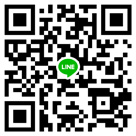1. Causes of Mold Marks
1-1 Variations in thickness of the product’s various parts.
1-2 Inadequate internal pressure within the mold.
1-3 Insufficient cooling of the mold.
1-4 Deformation due to inadequate cooling time.
2.Related Knowledge
2-1 During the production process, mold marks are the most common defect. Plastic injected into the mold shrinks as it cools. The surface hardens first due to early cooling, resulting in bubbles forming internally. Mold marks occur when the slow-cooling areas exhibit noticeable depressions in the direction of bubble shrinkage.
2-2 Materials with high shrinkage are also prone to mold marks. When adjusting molding conditions to eliminate mold marks, set conditions to reduce shrinkage. This involves lowering mold and barrel temperatures and increasing injection pressure, though this may introduce residual internal stresses.
2-3 Because inconspicuous mold marks are preferred, deliberate corrosion-like patterns, such as grooves or granules, can be intentionally machined onto the mold, if they don’t affect the appearance. Additionally, reducing mold temperature to enhance the glossiness is effective when molding HIPS material. However, once mold marks occur, repairing and polishing the product becomes difficult.
3.Solutions
3-1 Immediate: Increase injection pressure, prolong injection holding time, reduce barrel and mold temperatures, and enforce cooling at areas prone to mold marks.
3-2 Short-term: Patch the flow lines at areas prone to mold marks. Increase thickness at narrow sections where materials flow.
3-3 Long-term: Avoid designing product thickness disparities. Reinforcing ribs and elongated shapes prone to mold marks should be kept as short as possible.
4.Material Differences
4-1 Materials with high molding shrinkage tend to produce more pronounced mold marks. For instance, PE and PP materials produce mold marks even with slight reinforcement.
5.Considerations
5-1 When temperatures are lowered to prevent mold marks and material pressure remains within the cavity, the possibility of mold marks diminishes. The pressure within the mold cavity, or static pressure, varies throughout. Pressure is higher near the gate, where wide flow lines result in minimal pressure differences between areas near and far from the gate, preventing mold marks and minimizing residual internal stresses. In areas where material flow is difficult, high pressure occurs, leading to mold marks and higher residual stresses. In ideal conditions, with increasing material and mold temperatures, improved material flow and reduced static pressure occur during injection.
5-2 When adjusting molding conditions, a pre-prepared table of temperature, pressure, and time combinations should be followed sequentially to anticipate results. With prolonged time, even minor pressure changes become noticeable. It’s important to note that results of temperature changes should be observed after injecting material, as results may differ once the temperature lowers for subsequent production runs.



Related Posts
Quality Assurance & Quality Control | Definition-Difference-Methods-Process
what is the injection molding-part1
Some tips help you understand electric injection molding machines